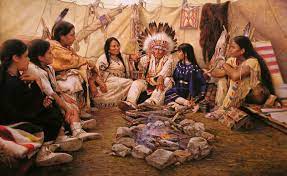
The round rooms in the foreground were called kivas and had ceremonial and non secular significance for the inhabitants. Cliff Palace had 23 kivas and 150 rooms housing a population of roughly one hundred folks; the number of rooms and huge population has led students to imagine that this advanced may have been the center of a larger polity that included surrounding communities. Peninsulares—Iberian-born Spaniards, or españoles—occupied the best levels of administration and bought the best estates. Their descendants, New World-born Spaniards, or criollos, occupied the subsequent rung and rivaled the peninsulares for wealth and alternative. Mestizos—a term used to describe these of mixed Spanish and Indigenous heritage—followed. Farther south, alongside the Andes Mountains in South America, the Quechuas, or Incas, managed a vast mountain empire.
Most of these mounds had been leveled in the course of the development of St. Louis, and much of their materials was reused in building initiatives. To the south of Monks Mound is the Grand Plaza, a large area that lined roughly 50 acres and measured over 1,600 ft in size by over 900 ft in width. Researchers initially thought the flat, open terrain in this space reflected Cahokia’s location on the Mississippi’s alluvial flood plain, but instead soil research have proven that the landscape was initially undulating ridge and swale topography. In one of the earliest large-scale building initiatives, the location had been expertly and deliberately leveled and crammed by town’s inhabitants. It is a half of the sophisticated engineering displayed all through the positioning. It was used for giant ceremonies and gatherings, in addition to for ritual games, such as chunkey.
Archaeologists can’t agree on the cause of its abandonment between 800 and 1,200 years ago. Old caricatures of Aboriginal societies as small, unsophisticated nomadic hunter-gatherer societies are challenged and overturned by this kind of evidence. It also supplies a challenge to the mannequin of agriculture-led city development. Keatley Creek on this respect has more in common what percentage of hard rock’s profit is derived from retail shop sales with the Norte Chico tradition of Peru that it does with Cahokia. Like the Mississippian tradition, Keatley Creek was a source of cultural diffusion and would have influenced many of its neighbours — by instance or by force. The Emerald web site, also recognized as the Emerald Acropolis, was an early Mississippian pilgrimage heart key to Cahokia’s improvement.
There was a lower in mammal and fowl remains, and a rise in fish. The less desirable parts of deer have been consumed in larger portions (Kelly L. S., 1997, p. 81–87). These modifications in food regimen coincided with the main modifications in political and territorial organization described earlier. Like most people until recent times, the individuals of the American Bottom depended primarily on plant meals.
Flanking the basic public area of the Grand Plaza there were smaller mounds, plazas, and residential areas. These don’t appear to have been established in accordance with an total conception or plan. Rather they form a complicated amalgamation of subcommunities or neighborhoods. These subcommunities may have consisted of kin-based social groups (Milner, 1991, p. 32). In these groupings, which present their very own internal group, resided the people who little doubt formed a lot of the labor force for public constructions.
This number of crops, animals, and terrain supported both the population and the metropolis. Unlike the Stirling part, the Moorehead inhabitants decline at Cahokia cannot be attributed to the discharge of labor to the countryside. The rural population of the thirteenth century declined additionally, and it did so quite as dramatically . George Milner sees a inhabitants decline on the order of 61% (1986, p. 232–233). Indeed the Moorehead phase population of the American Bottom dropped even below that of the Lohmann section, to about 61% of its stage of 100 to a hundred and fifty years previously.
To confirm the presence of the Emerald Avenue and document its bodily characteristics and chronology, we performed an electrical resistivity tomography survey, magnetometer survey, and excavations on portions of the Avenue close to the Acropolis. These investigations revealed that the Avenue is an early 19th century road that was utilized by early Euro-American settlers within the area. We present evidence that means that this historic highway was really a reused pre-Columbian route, presumably the Mississippian interval Emerald Avenue.
Erecting a woodhenge was difficult; it concerned digging large bathtub-shaped foundation holes, aligning and measuring, and coordinating the work of pulling the posts upright . Large work crews had been also assigned to stage the plazas, filling in the swales and tamping the surface easy. If I am an ordinary Cahokian I find my vertical place within the social hierarchy within the lowest components of town. If I am a priest I am above all different creatures, approaching the celestial world. Wood in a quantity of parts of the mound has been radiocarbon-dated to between 950 and one thousand CE.
